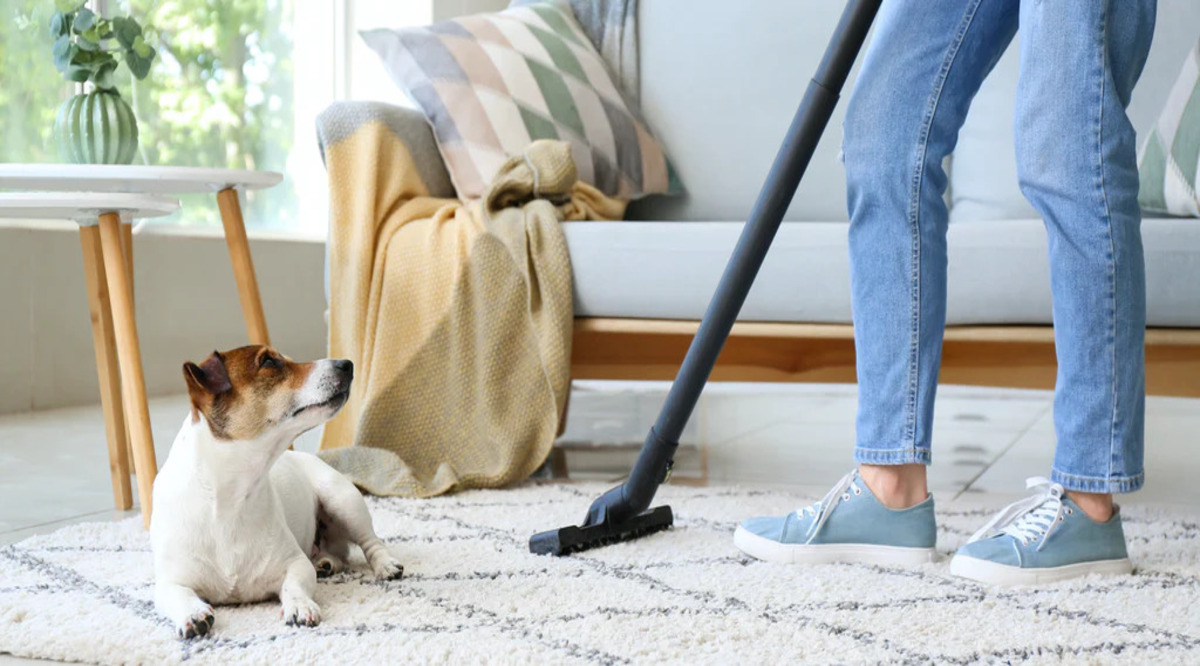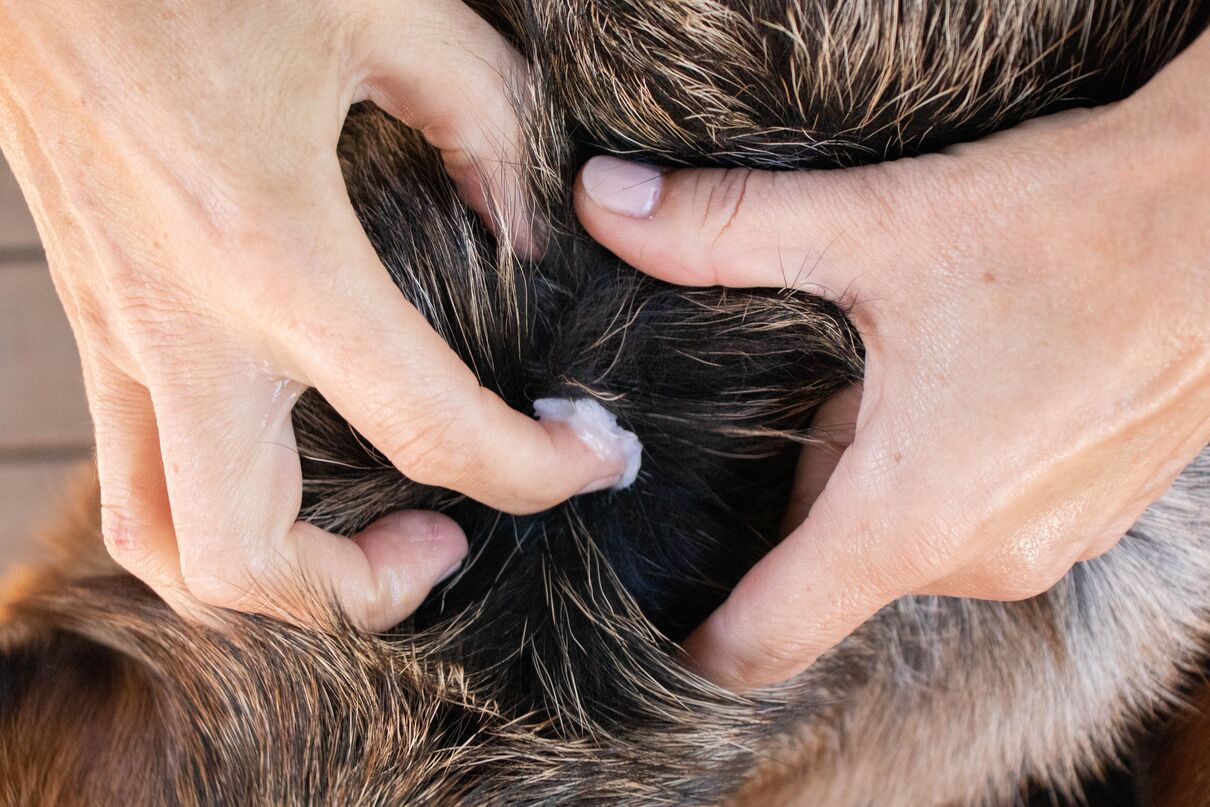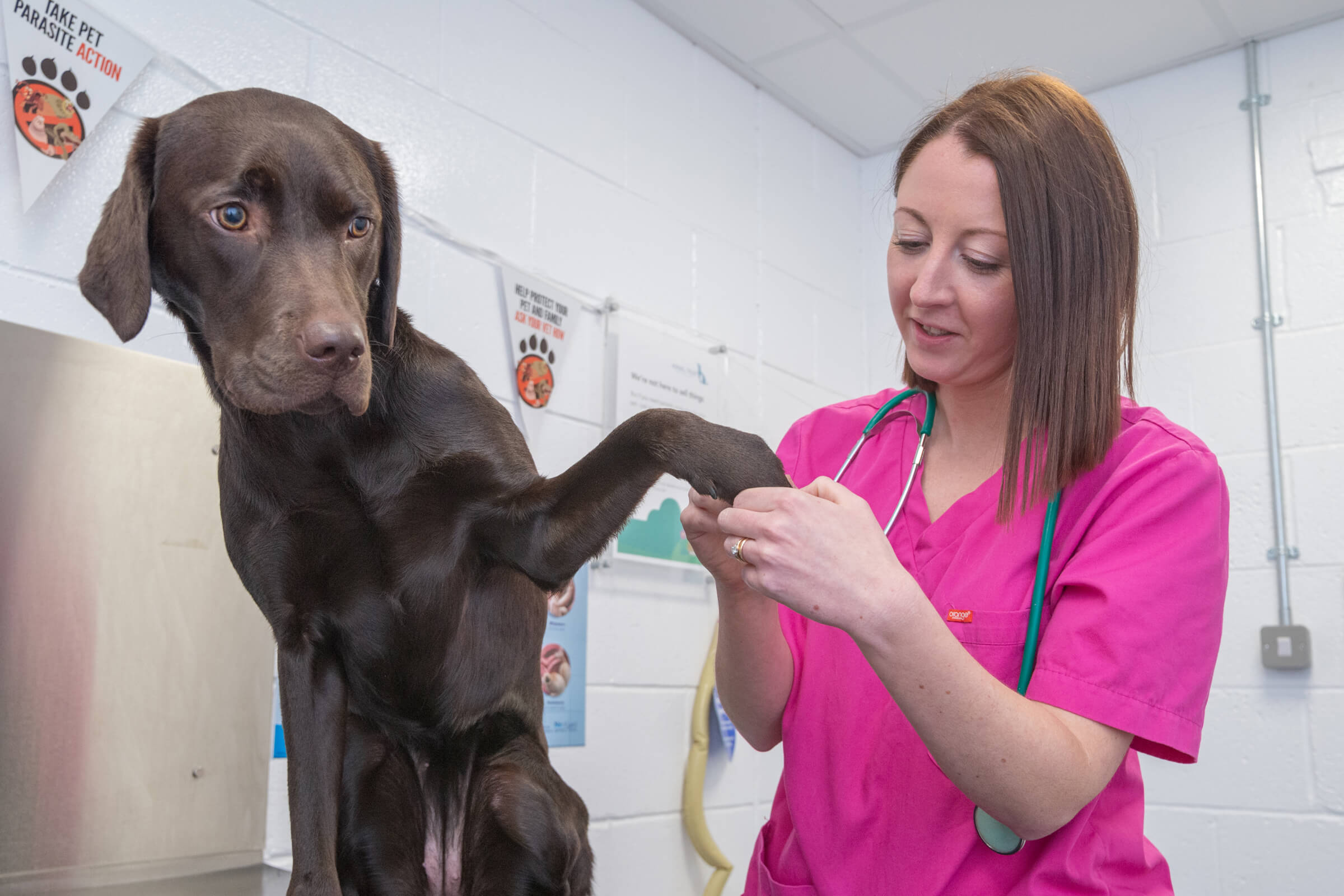Home>Health & Wellness>Common Health Issues>How To Clean For Dog Allergies


Common Health Issues
How To Clean For Dog Allergies
Modified: February 20, 2024
Learn effective cleaning tips to manage common health issues like dog allergies. Keep your home allergen-free with these simple cleaning strategies.
(Many of the links in this article redirect to a specific reviewed product. Your purchase of these products through affiliate links helps to generate commission for Pawsomeoldies.com, at no extra cost. Learn more)
Table of Contents
Introduction
Dealing with dog allergies can be a challenging and frustrating experience for many pet owners. Whether you're a long-time dog lover or considering bringing a furry friend into your home for the first time, understanding and managing dog allergies is crucial for creating a healthy and comfortable living environment for both you and your beloved pet.
Allergies to dogs are quite common and can manifest in various forms, ranging from mild sniffles and sneezing to more severe respiratory issues. It's essential to recognize the signs of dog allergies and take proactive steps to minimize exposure to allergens in your home. This article will provide valuable insights and practical tips on how to effectively clean and maintain a dog-friendly, allergy-free living space.
By implementing the strategies outlined in this article, you can significantly reduce the presence of allergens in your home, making it a safer and more enjoyable place for everyone, including your furry companion. Let's delve into the world of dog allergies and discover the best practices for creating a clean and healthy environment that promotes well-being and harmony for both you and your four-legged friend.
Read more: Dog Has Parasite: How Can I Clean The Lawn
Understanding Dog Allergies
Dog allergies are a common concern for many individuals, and understanding the underlying causes and symptoms is essential for effective management. Allergies to dogs are typically triggered by exposure to proteins found in the animal's skin cells, saliva, and urine. These proteins, known as allergens, can provoke an immune system response in susceptible individuals, leading to a range of allergic reactions.
The symptoms of dog allergies can vary widely from person to person, but common signs include sneezing, coughing, wheezing, itchy or watery eyes, nasal congestion, skin rashes, and in more severe cases, asthma attacks. It's important to note that allergies to dogs can develop at any age, and individuals with a family history of allergies or asthma may be at a higher risk.
When a person comes into contact with dog allergens, their immune system may perceive these substances as harmful invaders, prompting the release of histamines and other chemicals that cause allergy symptoms. Additionally, airborne dog allergens can settle on surfaces throughout the home, leading to prolonged exposure and potential allergic reactions even in the absence of direct contact with the pet.
It's crucial to differentiate between dog allergies and other respiratory conditions, such as the common cold or seasonal allergies, as the appropriate management strategies may vary. Consulting with a healthcare professional for an accurate diagnosis is essential for developing a targeted approach to managing dog allergies.
In summary, dog allergies are triggered by exposure to specific proteins found in a dog's skin cells, saliva, and urine. Understanding the symptoms and potential risk factors associated with dog allergies is the first step toward creating a safe and comfortable living environment for both allergy sufferers and their canine companions.
Identifying Allergens in Your Home
Identifying and addressing allergens in your home is a crucial step in managing dog allergies and creating a healthier living environment. Dog allergens can be pervasive, lingering on various surfaces and in the air, even when your pet is not in close proximity. By recognizing the common sources of dog allergens and taking proactive measures to minimize their presence, you can significantly reduce the risk of allergic reactions and promote overall well-being.
Sources of Dog Allergens
-
Dander: Shed skin cells, commonly known as dander, are a primary source of dog allergens. These microscopic particles can become airborne and settle on surfaces throughout your home, posing a persistent allergy risk.
-
Saliva: Dog saliva contains proteins that can trigger allergic reactions in susceptible individuals. When dogs groom themselves, saliva-coated fur and dander can spread allergens onto furniture, carpets, and other household items.
-
Urine: Proteins present in dog urine can also contribute to indoor allergens. Accidental urination or inadequate cleaning of pet urine can lead to the accumulation of allergens in the home environment.
Identifying Allergen Hotspots
To effectively manage dog allergies, it's essential to identify and target allergen hotspots in your home. Common areas where dog allergens accumulate include:
-
Upholstered Furniture: Upholstered surfaces, such as sofas, armchairs, and cushions, can harbor dander and saliva-coated fur, serving as reservoirs for allergens.
-
Carpeting: Carpets and rugs can trap and retain dog allergens, especially in areas where your pet frequently rests or plays.
-
Bedding: Your pet's bedding, as well as your own, can accumulate allergens over time, potentially exacerbating allergic reactions during sleep.
-
Airborne Particles: Dog allergens can remain suspended in the air for extended periods, particularly in areas with poor ventilation or high pet activity.
Using Allergen Detection Methods
Several methods can help identify and quantify the presence of dog allergens in your home:
-
Allergen Test Kits: Home allergen test kits are available to assess the levels of pet allergens in various areas of your home, providing valuable insights for targeted cleaning and mitigation efforts.
-
Professional Testing: Consider engaging professional allergen testing services to obtain comprehensive data on the presence of dog allergens and develop a tailored allergen reduction plan.
By understanding the sources of dog allergens, recognizing common allergen hotspots, and utilizing appropriate detection methods, you can take proactive steps to minimize allergen exposure and create a more allergy-friendly home environment for both you and your canine companion.
Cleaning Tips for Dog Allergies
Maintaining a clean and allergen-free home environment is essential for managing dog allergies and promoting overall well-being. By implementing effective cleaning strategies, you can significantly reduce the presence of dog allergens and create a healthier living space for both allergy sufferers and their canine companions. Here are practical cleaning tips to help mitigate dog allergens in your home:
Regular Vacuuming
Frequent vacuuming with a high-efficiency particulate air (HEPA) filter-equipped vacuum cleaner is crucial for removing dander, saliva-coated fur, and other allergens from carpets, rugs, and upholstered furniture. Focus on areas where your pet spends the most time, such as their favorite resting spots and play areas, to effectively capture and eliminate allergens.
Washing Bedding and Linens
Regularly washing your pet's bedding, as well as your own, in hot water can help eliminate accumulated allergens. Use a gentle, hypoallergenic detergent to ensure thorough cleaning without introducing additional irritants. Additionally, consider using allergen-proof covers for pillows and mattresses to minimize allergen exposure during sleep.
Cleaning Hard Surfaces
Wiping down hard surfaces, such as floors, walls, and countertops, with a damp microfiber cloth can help capture and remove settled allergens. Avoid dry dusting, as this can disperse allergens into the air. Using a mild, pet-safe cleaning solution can effectively neutralize allergens while maintaining a clean and hygienic environment.
Grooming and Bathing Your Pet
Regular grooming and bathing of your pet can significantly reduce the spread of allergens in your home. Brushing your dog outside can help minimize the release of dander indoors, while bathing them with a gentle, hypoallergenic shampoo can help remove allergens from their fur and skin, reducing the overall allergen load in your living space.
Air Purification
Investing in a high-quality air purifier with a HEPA filter can help capture and remove airborne dog allergens, improving indoor air quality. Place the air purifier in commonly used areas of your home to continuously filter the air and reduce allergen exposure.
Professional Cleaning Services
Consider engaging professional cleaning services that specialize in allergen removal. Professional cleaners can employ specialized techniques and equipment to thoroughly clean and sanitize your home, targeting allergen hotspots and ensuring a comprehensive reduction of dog allergens.
By incorporating these cleaning tips into your regular household maintenance routine, you can effectively minimize the presence of dog allergens in your home, creating a cleaner and more allergy-friendly environment for everyone. Consistent and thorough cleaning practices, coupled with proactive allergen reduction measures, can significantly alleviate the impact of dog allergies and contribute to a healthier and more comfortable living space.
Read more: How Often To Wash A Dog With Allergies
Creating an Allergy-Free Environment
Creating an allergy-free environment is essential for individuals with dog allergies to minimize their exposure to allergens and promote overall well-being. By implementing targeted strategies and making thoughtful adjustments to your living space, you can significantly reduce the presence of dog allergens and create a more comfortable and allergy-friendly home environment.
Pet-Free Zones
Designating specific areas within your home as pet-free zones can help minimize allergen exposure. For example, keeping your bedroom off-limits to your pet can create a sanctuary free from dog allergens, allowing for better sleep and reduced allergy symptoms. Additionally, using baby gates or other barriers to restrict access to certain rooms can help contain allergens in designated areas.
Allergen-Resistant Furnishings
Investing in allergen-resistant furnishings, such as washable slipcovers for sofas and chairs, can provide an added layer of protection against dog allergens. Opting for easy-to-clean, non-porous materials for flooring and furniture can help prevent allergen accumulation and facilitate more thorough cleaning.
Air Quality Management
Maintaining good indoor air quality is crucial for allergy management. Regularly changing HVAC filters, using high-efficiency air filters, and ensuring proper ventilation can help reduce airborne dog allergens. Additionally, minimizing the use of scented candles, air fresheners, and other potential irritants can contribute to a healthier indoor environment.
Read more: When Does My Dog Need Dental Cleaning?
Pet Grooming and Hygiene
Implementing a consistent pet grooming and hygiene routine is essential for managing dog allergens. Regularly brushing and bathing your pet can help reduce the spread of allergens in your home. Keeping your pet's fur trimmed can also minimize the accumulation of dander and saliva-coated hair, further reducing allergen exposure.
Allergen-Reducing Products
Utilizing allergen-reducing products, such as HEPA-filtered vacuum cleaners and air purifiers, can effectively capture and remove dog allergens from your home. Additionally, using hypoallergenic cleaning products and laundry detergents can help minimize the introduction of additional irritants while maintaining a clean and allergy-friendly living environment.
By incorporating these measures into your daily routine and home environment, you can create a more allergy-friendly space that promotes comfort and well-being for individuals with dog allergies. Consistent implementation of these strategies, coupled with regular cleaning and maintenance, can contribute to a significant reduction in allergen exposure and enhance the overall quality of life for both allergy sufferers and their furry companions.
Conclusion
In conclusion, managing dog allergies and creating an allergy-free home environment requires a multifaceted approach that encompasses understanding, proactive cleaning, and thoughtful environmental adjustments. By recognizing the sources of dog allergens and implementing targeted cleaning strategies, individuals can significantly reduce allergen exposure and mitigate allergic reactions. Regular vacuuming, washing bedding and linens, and grooming pets are essential practices for minimizing the presence of dog allergens in the home. Additionally, investing in allergen-resistant furnishings and air purification systems can contribute to a cleaner and more allergy-friendly living space.
Creating pet-free zones and maintaining good indoor air quality are crucial steps in managing dog allergies and promoting overall well-being. By designating specific areas within the home as pet-free zones and implementing measures to improve air quality, individuals with dog allergies can create sanctuaries that offer relief from allergen exposure. Furthermore, incorporating allergen-reducing products and utilizing hypoallergenic cleaning solutions can help maintain a clean and healthy living environment for both allergy sufferers and their beloved pets.
It's important to emphasize that while managing dog allergies requires diligence and consistent effort, the rewards of creating an allergy-free environment extend beyond symptom relief. By fostering a cleaner and more allergy-friendly home, individuals can enjoy a higher quality of life, improved respiratory health, and enhanced overall well-being. Moreover, by prioritizing the well-being of both allergy sufferers and their pets, a harmonious and nurturing living environment can be established, strengthening the bond between humans and their canine companions.
In essence, the journey toward creating an allergy-free home environment for individuals with dog allergies is a testament to the dedication and care invested in fostering a healthy and harmonious living space. By integrating the insights and strategies outlined in this article, individuals can embark on a transformative path toward a cleaner, more comfortable, and allergy-friendly home, where both humans and their furry friends can thrive in a space of well-being and tranquility.











